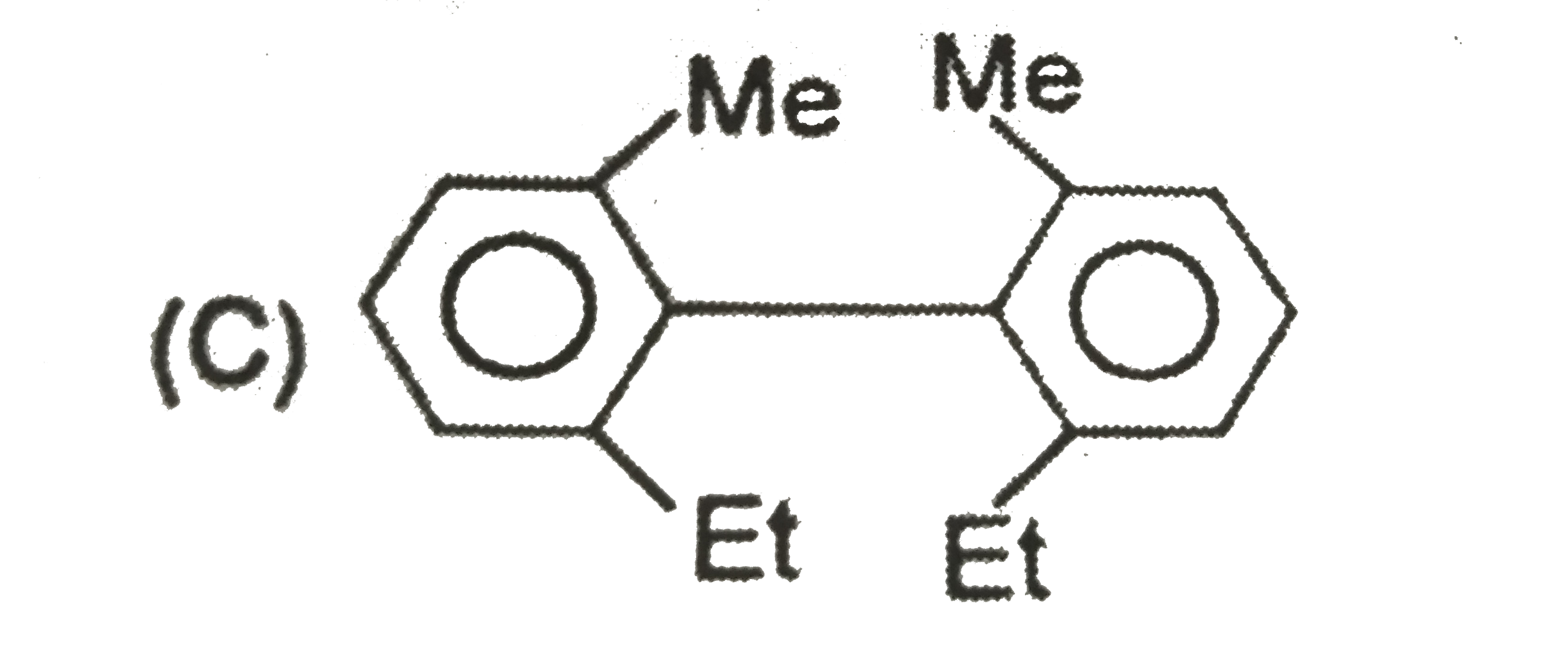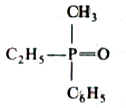Which of the following is/are chiral?




The correct Answer is:C, D
To determine which of the given compounds are chiral, we need to analyze each option based on the concept of chirality. A chiral compound is one that cannot be superimposed on its mirror image, typically due to the presence of a chiral center (usually a carbon atom bonded to four different substituents).
1. Analyze Option A:
- The structure is represented as Cl and Br at both ends.
- When we draw a plane through the molecule, it divides the compound into two equal halves.
- Since the molecule can be superimposed on its mirror image, it is not chiral.
2. Analyze Option B:
- The structure has a double bond with Cl and Br on both sides.
- Similar to Option A, if we draw a plane through the double bond, it divides the molecule into two equal halves.
- This indicates that the molecule can also be superimposed on its mirror image, hence it is not chiral.
3. Analyze Option C:
- The structure is similar to the previous options.
- Drawing a plane through the molecule again shows that it can be divided into two equal halves.
- Therefore, it is also not chiral.
4. Analyze Option D:
- The structure is represented as Br, H, H, and Br.
- In this case, one bromine is out of the plane while one hydrogen is inside the plane.
- No plane can divide this molecule into two equal halves, which means it cannot be superimposed on its mirror image.
- Thus, this compound is chiral.
Conclusion:
- The only chiral compound among the options is Option D.
- The structure is represented as Cl and Br at both ends.
- When we draw a plane through the molecule, it divides the compound into two equal halves.
- Since the molecule can be superimposed on its mirror image, it is not chiral.
- The structure has a double bond with Cl and Br on both sides.
- Similar to Option A, if we draw a plane through the double bond, it divides the molecule into two equal halves.
- This indicates that the molecule can also be superimposed on its mirror image, hence it is not chiral.
- The structure is similar to the previous options.
- Drawing a plane through the molecule again shows that it can be divided into two equal halves.
- Therefore, it is also not chiral.
- The structure is represented as Br, H, H, and Br.
- In this case, one bromine is out of the plane while one hydrogen is inside the plane.
- No plane can divide this molecule into two equal halves, which means it cannot be superimposed on its mirror image.
- Thus, this compound is chiral.
- The only chiral compound among the options is Option D.
Topper's Solved these Questions
- STEREOISOMERISMBOOK - RESONANCE ENGLISHCHAPTER - STEREOISOMERISMEXERCISE - EXERCISE (PART II SECTION (I))
9 Videos
- STEREOISOMERISMBOOK - RESONANCE ENGLISHCHAPTER - STEREOISOMERISMEXERCISE - EXERCISE (PART II SECTION (J))
11 Videos
- STEREOISOMERISMBOOK - RESONANCE ENGLISHCHAPTER - STEREOISOMERISMEXERCISE - EXERCISE (PART II SECTION (G))
7 Videos
- SOLUTIONSBOOK - RESONANCE ENGLISHCHAPTER - SOLUTIONSEXERCISE - Advabced Level Problems (PART-2)
35 Videos
- STRUCTURAL IDENTIFICATIONBOOK - RESONANCE ENGLISHCHAPTER - STRUCTURAL IDENTIFICATIONEXERCISE - Advanced level Problems (Part-III)
12 Videos
Similar Questions
Knowledge Check
Which of the following is a chiral molecule?
A1-chloro propaneB2-chloro propaneC1-chloro butaneD2-chloro butaneWhich of the following is chiral?
A B
B C
C D
D
Which of the following is chiral?
ACell phoneBSpiral staircaseCScissorDAll of these



